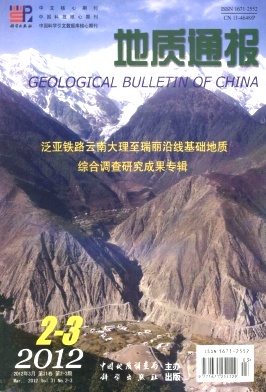YANG He-qun1, ZHAO Guo-bin1, LI Ying2, JIANG Han-bing1, TAN Wen-juan1,REN Hua-ning1, WANG Xing-an1, XIONG Zhong-yi1, ZHANG Xiao-ping1. The relationship between Paleozoic tectonic setting and mineralization in Xinjiang-Gansu-Inner Mongolia juncture area[J]. Geological Bulletin of China, 2012, 31(0203): 413-421.
| Citation: |
YANG He-qun1, ZHAO Guo-bin1, LI Ying2, JIANG Han-bing1, TAN Wen-juan1,REN Hua-ning1, WANG Xing-an1, XIONG Zhong-yi1, ZHANG Xiao-ping1. The relationship between Paleozoic tectonic setting and mineralization in Xinjiang-Gansu-Inner Mongolia juncture area[J]. Geological Bulletin of China, 2012, 31(0203): 413-421.
|
The relationship between Paleozoic tectonic setting and mineralization in Xinjiang-Gansu-Inner Mongolia juncture area
-
1. Xi′an Institute of Geology and Mineral Resources, China Geological Survey, Xi′an 710054, Shaanxi, China; 2. Chang′an University, Xi′an 710054, Shaanxi, China
-
Abstract
The Xinjiang-Gansu-Inner Mongolia juncture area is divided into two parts, i.e., Xingxingxia-Hanshan micro-plant and Dunhuang micro-plant, and the suture line between them is Hongliuhe-Niujuanzi-Xichangjing ophiolite belt. Paleozoic tectonic evolution of the area underwent three stages: Sinian-Ordovician belonged to the old landmass divergence and ocean basin spreading stage, Silurian-Devonian belonged to the plate subduction and collision-orogeny stage, and Carboniferous-Permian belonged to the continental rift stage. In Cambrian, the shallow marine basin of old landmass was divergent frequently, and sedimentary deposits could be formed, such as phosphorus-vanadium-uranium-manganese mineral resources. In Ordovician ocean basin and back-arc basin, volcano-sedimentary type copper-zinc minerals could be formed, and Silurian-Devonian island-arc volcanic formation might serve as host rock of porphyry copper deposits. The volcano-sedimentary type iron deposits probably occurred in Carboniferous-Permian continental rift sedimentary formation, and porphyry copper deposits and copper-nickel deposits of basic rock type could be formed. The palaeocontinunt crust melting type granite mass constituted favorable background for the formation of metallogenic W, Sn and rare metal deposits.
-

-
-
Access History







 DownLoad:
DownLoad: